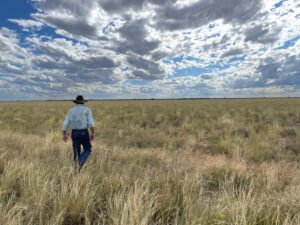Insurers offer discounts for avoiding smoking and good driving because these practices are proven to mitigate risk and save them money. So should insurers and agricultural lenders offer farmers that look after their soil a ‘good soil discount’?
While it’s generally understood that cover cropping, reduced tillage, and crop rotations benefit soil, these practices are by no means ubiquitous, not least because there are high upfront costs, the benefits don’t come overnight, and there are no immediate financial incentives, says soil health nonprofit Land Core.
Insurers and lenders, meanwhile, do not currently offer discounts for farmers engaging in such practices because their specific impacts at the field level, especially on crop yields, have not been quantified, it says. Until now.
‘A market-based, actuarially sound model’
Armed with a Foundation for Food & Agriculture Research (FFAR) seeding solutions grant, Land Core is creating a “market-based, actuarially sound model that can determine the risk-mitigation benefits and related cost savings associated with specific soil health practices.”
The model should finally provide the data that insurers and lenders need to incentivize farmers to engage in practices that support soil health, says agricultural economist Dr. Lawson Connor from the University of Arkansas System Division of Agriculture.
“We need to quantify the resilience and economic benefits of applying soil health practices to determine the unaccounted value they provide to financial systems and reward the farmers implementing them appropriately.”
“It’s commonplace across industries to incentivize the adoption of low-risk practices. Healthy soil should be no different.” Aria McLauchlan, cofounder, Land Core
17 years of data from nine Midwest states
So how are they doing it?
In a nutshell, Land Core and a cross-disciplinary research team is crunching 17 years of data on corn and soybean fields in nine Midwest states covering:
- The adoption of cover cropping, no till/conservation tillage and crop rotations, via remote sensing;
- Estimated corn and soybean yields, via remote sensing and modeling;
- Publicly available climate, weather, soil and geological data;
- County-level economic data such as input use and crop insurance indemnities.
They are then turning this data into a model capable of predicting the likelihood of reduced financial risk at field, farm, county and state levels for corn and soybeans, from adopting these three soil health practices.
Land Core is also partnering with agricultural lender and insurer Compeer Financial, a farm credit system cooperative with $30 billion in assets, to develop the model.
As tax dollars currently subsidize billions of dollars in crop insurance payouts due to flood and drought, this research could also give USDA’s Risk Management Agency (RMA) a tool to reliably quantify field-level risk reduction, potentially saving taxpayers money, claims Land Core.
‘A wider array of incentives are needed beyond carbon markets’
While carbon markets can potentially incentivize farmers to engage in good soil health practices, “their pay-for-performance nature and unknown future market value make them a difficult tool to incentivize change,” Harley Cross, cofounder at Land Core, tells AgFunderNews.
“Appropriately pricing risk is a more equitable, scalable and actionable approach to drive the adoption of de-risking practices and may, in fact, pave a more financially prudent pathway for producers to access future carbon and ecosystem services markets as they mature.”
While healthy soil can span everything from biodiversity to soil nutrients, carbon sequestration and water retention and drainage, the FFAR project is not attempting to quantify or measure soil health, he stresses.
Instead, it is focusing specifically on the correlation between crop yields and three specific soil health practices for which the team has hard satellite data: cover cropping, reducing tillage, and crop rotations.
If these are shown over time to increase yields, there will be financial incentives for insurers and lenders to factor this into pricing, he says.
“We’re not doing any soil sampling of any kind, we’re not looking at carbon, we’re simply saying, is there a direct correlation between the farms who implement these practice practices, and yields, especially when there was a flood, a drought, or some kind of pressure being put on the crop, as we can visibly calculate the resilience of the soil.”
‘Ultimately, our goal is to have this model looked at by the RMA’
Right now, he says, there are too many unknowns for farmers to fund initiatives where the returns are not clear: “There has also been some fear around cover cropping. Maybe I’m not going to be able to get my crop insurance if I plant a cover crop, and when do I have to terminate it? It’s also possible you’ll take a yield hit in the first year, and that might have negative impacts on your crop insurance.”
Land Core cofounder Aria McLauchlan adds: “I believe that a wider array of incentives are needed beyond carbon markets.”
According to Cross: “Initially we’re talking to private sector insurers and lenders, but ultimately, our goal is to have this model looked at by the RMA [USDA’s Risk Management Agency, which manages the federal crop insurance corporation] and, and have them see that there is value there for the taxpayer.
“That if they incentivize low risk behavior in the same way that every other industry does, and give a good soil health discount in the same way that there is a good driver discount or no smoking discount, that that they can lower the cost of the crop insurance program.
“We want to provide RMA with a way of lowering the long-term risk without reducing the coverage or benefits that they provide to farmers.”
To place the scheme in perspective, he says, “The ag lending sector represents almost half a trillion dollars’ worth of loans. So if we are able to get that industry to be able to quantify the savings associated to soil health, that is a big deal.”
Further reading:




